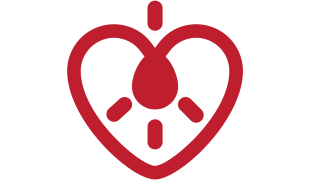- 7493
- 441
- 12
- 11
- 0
- Help Ukraine
About the solution
Dana Edwards’ son, Tanner Edwards, suffers from Duchenne Muscular Dystrophy.
Duchenne is a progressive neuromuscular disorder that can cause loss of motor, pulmonary, and cardiac function as well as premature death.
Tanner is not able to stand or use his arms or legs, but Dana did not want this to become a limitation for her family. As he became heavier, it became more difficult to lift him. One of the main problems was that Tanner would get anxious when being lifted, as he is afraid of falling. This made it difficult for him to be social and go to events at friends’ houses, as there would be situations where lifting would be required.
So, Dana created the Perfect Lift, a device that facilitates lifting her son. It is water-resistant and washable, and can transport up to 136 Kg (300 pounds). With Perfect Lift, Tanner can easily be moved by any two or three people. He can also be transported to the bed, the tub or the pool in a safe way. It also has a commode cutout, which makes it convenient for both sexes to use the restroom.
The device has allowed her family to travel again. Soon, she noticed that other people would ask about her invention, as they saw the family using it on vacation.
That is when Dana decided to turn her idea into a business and sell her invention to other people. After getting funding on the website ‘Kickstarter’, the device can now be bought on the official website for $150.
Dana hopes her invention will help elderly people or people with disabilities improve their lives by facilitating their safe transport.
Adapted from: http://bit.ly/2mj8Spv
http://bit.ly/2kL2HtK
http://bit.ly/2kl4dCL
More info: https://perfectlift.org
This solution shall not include mention to the use of drugs, chemicals or biologicals (including food); invasive devices; offensive, commercial or inherently dangerous content. This solution was not medically validated. Proceed with caution! If you have any doubts, please consult with a health professional.
DISCLAIMER: This story was written by someone who is not the author of the solution, therefore please be advised that, although it was written with the utmost respect for the innovation and the innovator, there can be some incorrect statements. If you find any errors please contact the patient Innovation team via info@patient-innovation.com
-
-
545
-
0
-
7402

Slacks with zippers on both sides for patients who have to stand up in public
CAREGIVING
(SELF)-CARE: DRESSING: Dressing independently.
Amyotrophic Lateral Sclerosis
Strategy/Tip
Body-Worn solutions (Clothing, accessories, shoes, sensors...)
Tremors
Muscle cramps or spasms
Stiffness or rigidity (difficulty moving)
Muscle weakness
Trouble with fine motor skills (e.g., writing, buttoning clothes)
Sleep disturbances
Numbness or tingling in the extremities
Restoring mobility
Managing pain
Promoting self-management
Managing Neurological Disorders
Promoting inclusivity and social integration
Preventing (Vaccination, Protection, Falls, Research/Mapping)
Caregiving Support
General and Family Medicine
Medical Genetics
Medical Oncology
Neurology
Orthopedics
Physical Medicine and Rehabilitation
Rheumatology
United States
-
-
-
509
-
0
-
7344

Scooter for disabled people
MOVING IN A WHEELCHAIR: Moving using a wheelchair.
CAREGIVING
Amyotrophic Lateral Sclerosis
Assistive Daily Life Device (to help ADL)
Walking Aid (wheelchair/walker/crutches)
Gait abnormalities (e.g., walking difficulties, unsteady gait)
Muscle cramps or spasms
Difficulty coordinating movements
Stiffness or rigidity (difficulty moving)
Paralysis of the legs and lower body
Muscle weakness
Fatigue
Restoring mobility
Promoting self-management
Rehabilitating After Stroke
Managing Neurological Disorders
Promoting inclusivity and social integration
Preventing (Vaccination, Protection, Falls, Research/Mapping)
Caregiving Support
Neurology
Orthopedics
Rheumatology
United States
-
-
-
342
-
0
-
4576

Step articulated and mobile
MOVING IN A WHEELCHAIR: Moving using a wheelchair.
Traveling
Urban exploration
Paralysis
Assistive Daily Life Device (to help ADL)
Walking Aid (wheelchair/walker/crutches)
Restoring mobility
Promoting self-management
Managing Neurological Disorders
Building Supportive Community Relationships
Promoting inclusivity and social integration
Recovering from Traumatic Injuries
Maintaining Balance and Mobility
To improve Treatment/Therapy
Raise awareness
Caregiving Support
Neurology
Orthopedics
Rheumatology
Portugal
-
 en
en